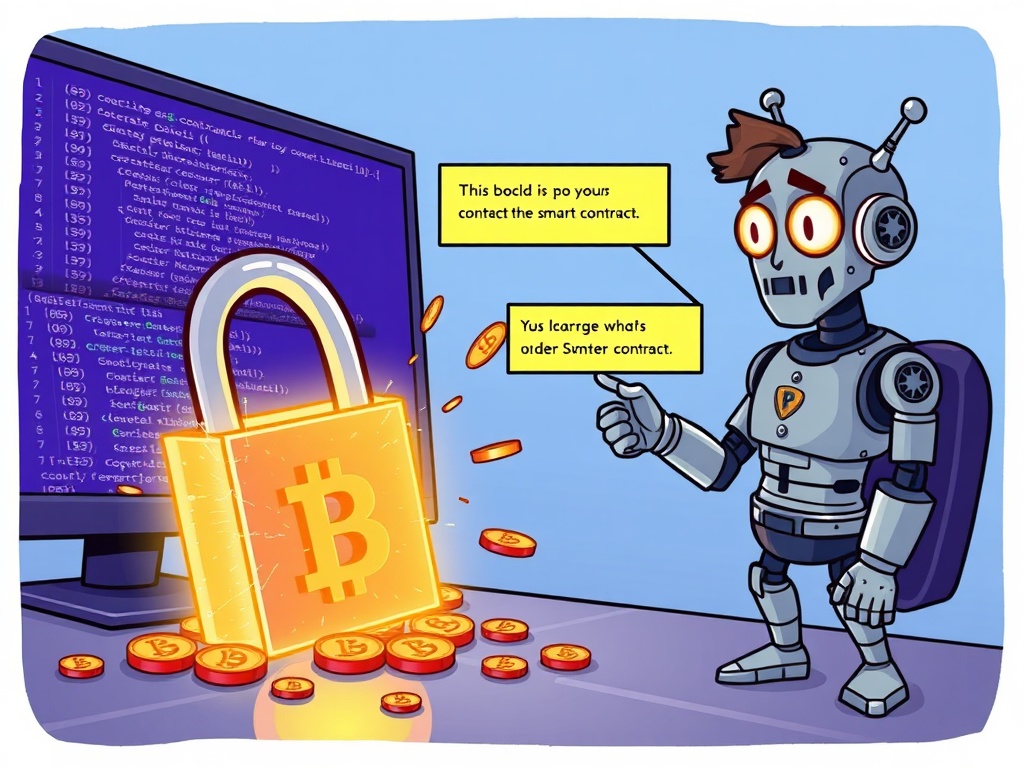BitcoinWorld

Smart Contract Security: Unmasking the Preventable SuperRare $731K Exploit
The digital art world, a vibrant frontier of innovation, recently faced a stark reminder of blockchain’s inherent vulnerabilities. The SuperRare platform, a prominent NFT marketplace, suffered a significant $731,000 exploit. What’s truly striking? Cybersecurity experts widely agree this breach, rooted in a basic bug in SuperRare’s staking contract, was entirely preventable. As 0xAw, lead developer at Alien Base, noted, standard unit tests or even an AI like ChatGPT could have caught the error. This incident isn’t just a SuperRare problem; it’s a critical wake-up call for the entire crypto ecosystem about the paramount importance of robust smart contract security.
Unpacking the SuperRare Exploit: A Preventable Smart Contract Security Breach
At the core of the SuperRare exploit was a fundamental flaw: a basic bug in its staking contract allowed any address to change its Merkle root. This cryptographic hash, vital for data integrity, was manipulable, leading to the unauthorized siphoning of $731,000. This wasn’t a complex, novel attack, but rather a straightforward logical error. Experts highlighted that such a vulnerability should have been caught during development. The consensus points to a lapse in basic quality assurance processes, underscoring that even well-established platforms are not immune to simple, yet catastrophic, errors if fundamental smart contract security practices are overlooked.
Why Robust Testing is Paramount for Smart Contract Security
The SuperRare incident powerfully illustrates why rigorous testing and auditing are non-negotiable for smart contracts. Key preventative measures include:
- Comprehensive Unit Testing: Isolating and verifying individual contract functions to catch logical errors and edge cases.
- Automated Security Scans: Employing tools to automatically identify known vulnerabilities and common exploit patterns.
- Independent Security Audits: Engaging reputable third-party firms for unbiased, expert code reviews. Multiple audits are highly recommended for high-value contracts.
- Formal Verification: For critical components, mathematically proving the correctness of a contract’s logic offers the highest assurance.
The immutable nature of smart contracts means bugs, once deployed, are incredibly difficult to fix. This makes pre-deployment vigilance, despite the rapid pace of innovation in DeFi and NFTs, the ultimate safeguard against incidents like the SuperRare hack.
Actionable Strategies to Enhance Your Smart Contract Security Posture
Learning from exploits like SuperRare’s is crucial for building a more secure decentralized future. Both developers and users play vital roles in elevating overall smart contract security.
For Developers & Project Teams:
- Security-First Development: Integrate security considerations from design to deployment.
- Continuous Auditing & Monitoring: Regular security audits and real-time monitoring for anomalies.
- Bug Bounty Programs: Incentivize ethical hackers to find vulnerabilities proactively.
- Transparency: Publicly share audit reports and communicate openly about security measures.
For Users & Investors:
- Thorough Due Diligence: Research a protocol’s security history, audit reports, and team before interacting.
- Understand Risks: Acknowledge that even audited contracts carry inherent risks; never invest more than you can afford to lose.
- Use Reputable Wallets: Employ hardware wallets for significant holdings and practice strong digital hygiene.
The Evolving Landscape and Future of Smart Contract Security
Despite challenges like rapid innovation, complexity, and talent shortages, the industry is constantly advancing smart contract security. Future developments include:
- Advanced AI/ML Auditing: AI models are being developed to identify vulnerabilities more efficiently and learn from past exploits.
- Wider Formal Verification: Mathematical proofs of code correctness are becoming more mainstream for critical contracts.
- Decentralized Security Solutions: Community-driven initiatives and peer-to-peer auditing networks are gaining traction.
- Standardized & Secure Libraries: Increased use of battle-tested, audited code libraries reduces the surface area for new bugs.
These advancements, coupled with a collective commitment to fundamental security hygiene, are crucial for building a more resilient and trustworthy blockchain ecosystem.
The SuperRare hack serves as a poignant reminder that even in the cutting-edge world of digital art and blockchain, foundational security principles cannot be overlooked. The $731,000 exploit, stemming from a basic, preventable bug, underscores the critical importance of rigorous testing, comprehensive audits, and a security-first mindset in smart contract development. While the allure of rapid innovation is strong, neglecting robust smart contract security can be devastating, eroding the trust that underpins the entire decentralized ecosystem. As the industry matures, a collective commitment to higher security standards, leveraging both established practices and emerging technologies, will be paramount to safeguarding digital assets and fostering sustained growth.
Frequently Asked Questions (FAQs)
Q1: What is a smart contract, and why is its security so important?
A1: A smart contract is self-executing code on a blockchain that automatically executes actions. Security is vital because they manage digital assets without human intervention; vulnerabilities can lead to irreversible financial losses, as seen with SuperRare.
Q2: How could a “basic bug” lead to such a large exploit like the SuperRare hack?
A2: Even simple flaws, like unauthorized Merkle root changes, can be catastrophic when affecting core financial contract functions. The SuperRare case shows how a seemingly minor error can enable a $731,000 unauthorized withdrawal in an immutable, high-value environment.
Q3: What role do unit tests play in preventing smart contract exploits?
A3: Unit tests are fundamental for smart contracts. They involve testing individual code components in isolation to ensure correct functionality. Rigorous unit testing can catch logical errors and vulnerabilities before deployment, significantly reducing exploit risks.
Q4: What should users look for to ensure a DeFi project has good smart contract security?
A4: Users should look for public audit reports from reputable firms, active bug bounty programs, an experienced development team, and transparent communication regarding security. Always do your due diligence and understand the inherent risks.
The lessons from the SuperRare hack are invaluable for anyone navigating the crypto space. If you found this article insightful and believe in fostering a more secure decentralized future, please consider sharing it with your network. Let’s collectively raise awareness about the critical importance of smart contract security!
To learn more about the latest smart contract security trends, explore our article on key developments shaping blockchain technology and its future resilience.
This post Smart Contract Security: Unmasking the Preventable SuperRare $731K Exploit first appeared on BitcoinWorld and is written by Editorial Team





